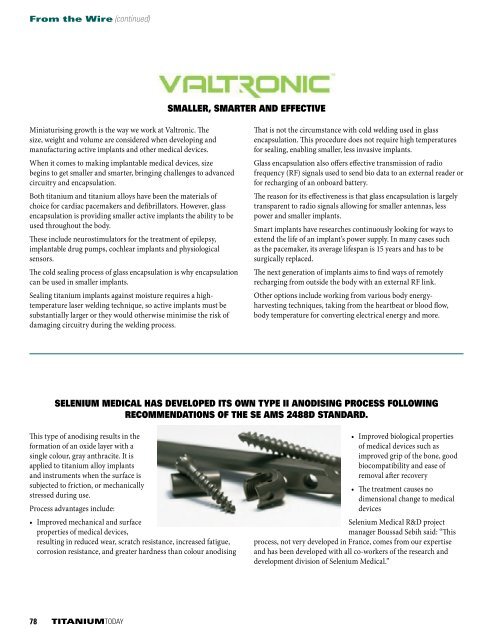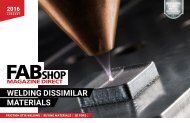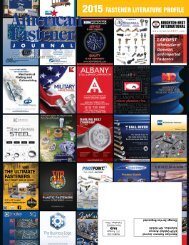100% Positive Material Identification
23mhiW2
23mhiW2
Create successful ePaper yourself
Turn your PDF publications into a flip-book with our unique Google optimized e-Paper software.
From the Wire (continued)<br />
SMALLER, SMARTER AND EFFECTIVE<br />
Miniaturising growth is the way we work at Valtronic. The<br />
size, weight and volume are considered when developing and<br />
manufacturing active implants and other medical devices.<br />
When it comes to making implantable medical devices, size<br />
begins to get smaller and smarter, bringing challenges to advanced<br />
circuitry and encapsulation.<br />
Both titanium and titanium alloys have been the materials of<br />
choice for cardiac pacemakers and defibrillators. However, glass<br />
encapsulation is providing smaller active implants the ability to be<br />
used throughout the body.<br />
These include neurostimulators for the treatment of epilepsy,<br />
implantable drug pumps, cochlear implants and physiological<br />
sensors.<br />
The cold sealing process of glass encapsulation is why encapsulation<br />
can be used in smaller implants.<br />
Sealing titanium implants against moisture requires a hightemperature<br />
laser welding technique, so active implants must be<br />
substantially larger or they would otherwise minimise the risk of<br />
damaging circuitry during the welding process.<br />
That is not the circumstance with cold welding used in glass<br />
encapsulation. This procedure does not require high temperatures<br />
for sealing, enabling smaller, less invasive implants.<br />
Glass encapsulation also offers effective transmission of radio<br />
frequency (RF) signals used to send bio data to an external reader or<br />
for recharging of an onboard battery.<br />
The reason for its effectiveness is that glass encapsulation is largely<br />
transparent to radio signals allowing for smaller antennas, less<br />
power and smaller implants.<br />
Smart implants have researches continuously looking for ways to<br />
extend the life of an implant’s power supply. In many cases such<br />
as the pacemaker, its average lifespan is 15 years and has to be<br />
surgically replaced.<br />
The next generation of implants aims to find ways of remotely<br />
recharging from outside the body with an external RF link.<br />
Other options include working from various body energyharvesting<br />
techniques, taking from the heartbeat or blood flow,<br />
body temperature for converting electrical energy and more.<br />
SELENIUM MEDICAL HAS DEVELOPED ITS OWN TYPE II ANODISING PROCESS FOLLOWING<br />
RECOMMENDATIONS OF THE SE AMS 2488D STANDARD.<br />
This type of anodising results in the<br />
formation of an oxide layer with a<br />
single colour, gray anthracite. It is<br />
applied to titanium alloy implants<br />
and instruments when the surface is<br />
subjected to friction, or mechanically<br />
stressed during use.<br />
Process advantages include:<br />
• Improved mechanical and surface<br />
properties of medical devices,<br />
resulting in reduced wear, scratch resistance, increased fatigue,<br />
corrosion resistance, and greater hardness than colour anodising<br />
• Improved biological properties<br />
of medical devices such as<br />
improved grip of the bone, good<br />
biocompatibility and ease of<br />
removal after recovery<br />
• The treatment causes no<br />
dimensional change to medical<br />
devices<br />
Selenium Medical R&D project<br />
manager Boussad Sebih said: “This<br />
process, not very developed in France, comes from our expertise<br />
and has been developed with all co-workers of the research and<br />
development division of Selenium Medical.”<br />
78 TITANIUMTODAY







